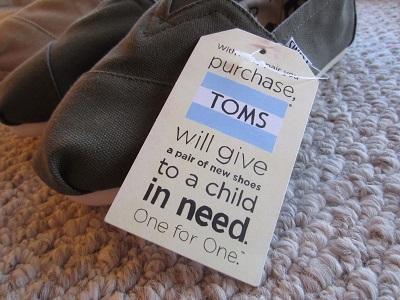There is a deep desire in people to contribute to the well-being of others who are less fortunate. When a supplier takes up the onus of contributing a percentage of sales proceeds to a worthy cause and is seen to be delivering on the promise, it motivates customers to purchase the products because it meets the need to contribute to a cause. Blake Mycoskie, the founder of the US-based TOMS Shoes, created a unique business model with a double bottom line effect[i]. He combined for-profit and not-for-profit philosophies into a successful venture that created social impact. During his trip to Argentina in 2006, he noticed poor children without shoes facing a lot of hardship and was deeply moved by their plight. He founded TOMS Shoes that donated one pair of shoes to poor children in different parts of the world for every pair purchased. The cost of the free shoe was built into the price of the shoe that was sold, thus ensuring profitability. As of 2019, the company managed to provide 95 million pairs of shoes to children in 70 countries. The same principle was adopted when the company introduced eyewear in 2011. Instead of donating a free pair of glasses for every pair sold, TOMS used part of the sales proceeds to restore a person’s eyesight in a developing country. This initiative helped restore sight to more than 780,000 people. The “One-for-One” campaign has been extended to support other causes such as water, birth, and anti-bullying initiatives. This was also extended to sell Mycoskie’s book!

TOMS received free publicity when celebrities such as Keira Knightley, Scarlett Johansson, Liv Tyler, Anne Hathaway, Tom Felton, and Julia Roberts became TOMS storytellers by adopting the brand and spreading the story. This also helped increase awareness on social media.
You will find many marketers claiming to donate part of the sales proceeds to charity. However, customers are very sceptical of these claims because of the lack of verifiable evidence. Had TOMS priced its products high without the worthy cause or evidence attached to their claims, the customers would have been sceptical about buying the product. TOMS was able to convert potential customers by appealing to their value systems. TOMS was able to sell effectively a highly priced product by combining it with the customer need to contribute to a better world.
Interestingly we have covered a few interesting ventures that are creating social impact at scale by following interesting business models – Gram Oorja and Taraltec
[i] Arezou Naeini et al. (2015). A Shoe for a Shoe, and a Smile. Business Today [Online] June 7th, 2015. Available from: https://www.businesstoday.in/magazine/lbs-case-study/toms-shoes-shoes-for-free-cause-marketing-strategy-case-study/story/219444.html [Accessed on: 24 Oct 2020]





